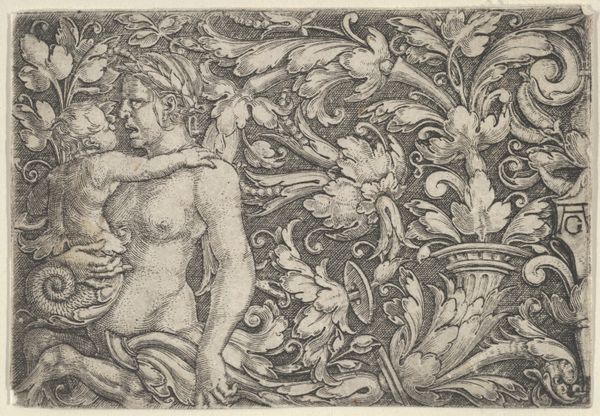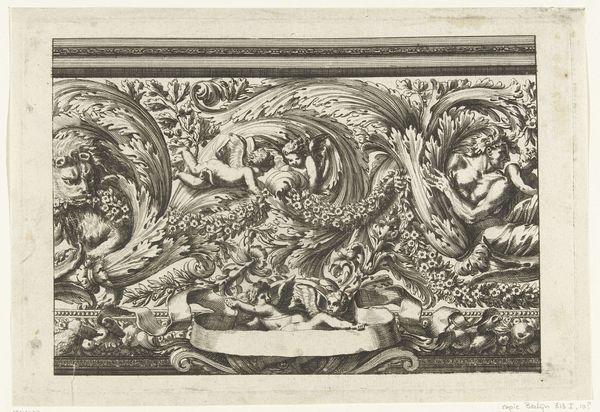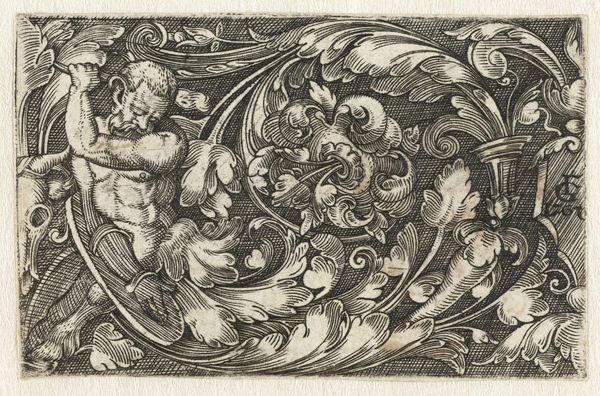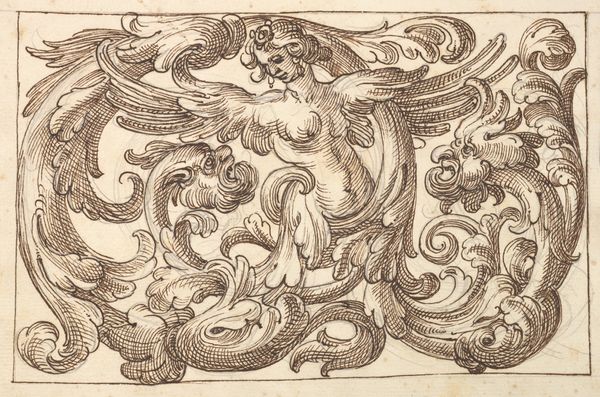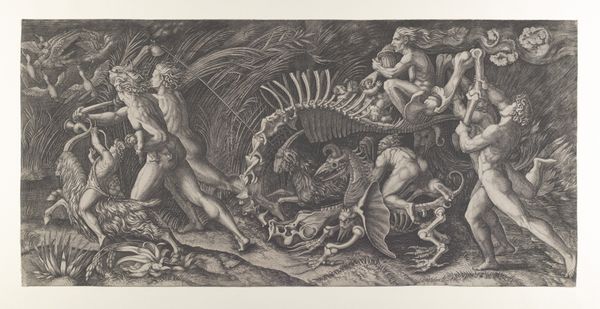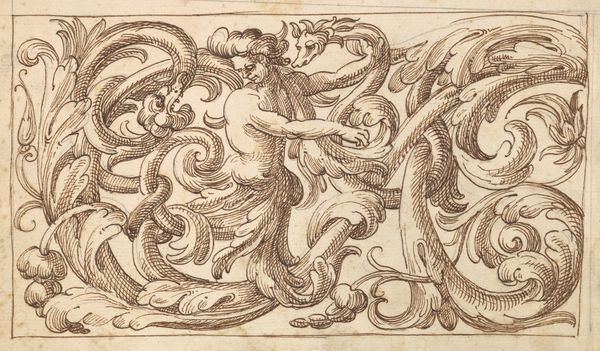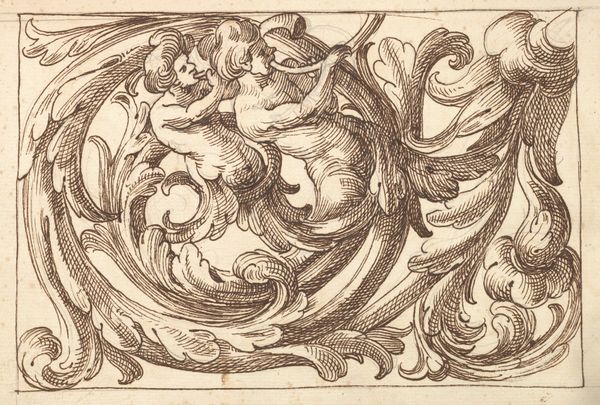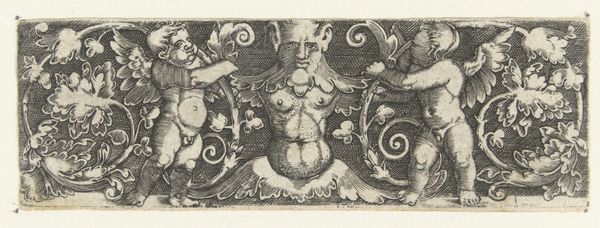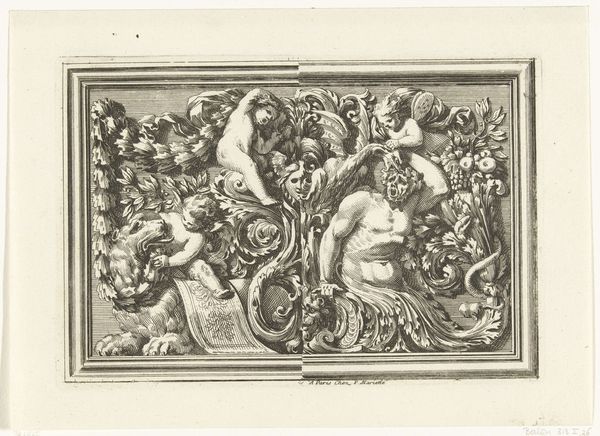
drawing, ink
#
drawing
#
baroque
#
pen drawing
#
pen illustration
#
pen sketch
#
figuration
#
ink
#
decorative-art
Dimensions: height 69 mm, width 215 mm
Copyright: Rijks Museum: Open Domain
Editor: This is an ornamental frieze, a pen and ink drawing from around 1688 to 1698. It's attributed to an anonymous artist and it's part of the Rijksmuseum collection. I find the composition rather chaotic, almost overwhelming with its swirling motifs. How do you interpret this work? Curator: That feeling of overwhelm is exactly where I want to start! Think about the late 17th century, a period defined by strict social hierarchies and the burgeoning power of the aristocracy. This frieze, likely intended as a design for architectural decoration, reflects that context. What do you see represented? Editor: Well, there are human figures, cherubs, a sphinx, and lots of swirling leaves and what looks like fruit. It's all very elaborate. Curator: Exactly. It’s an idealized world presented in the Baroque style, meant to project authority, prosperity, and even divinity. Note the abundant use of classical motifs - the sphinx, the figures echoing Greek sculpture - but rendered with dramatic flair. Editor: So it's not just decoration; it's making a statement? Curator: Precisely! Decoration during the Baroque wasn’t mere embellishment, it was a powerful tool for communicating status. This drawing speaks volumes about the values and aspirations of the patrons who would have commissioned such work, showcasing their education and their link to a noble past. Where do you see any potential inequalities in this presentation? Editor: Hmm… everyone here looks pretty idealized. It's hard to imagine a regular person feeling represented. Curator: Exactly! The opulence could be considered oppressive, a celebration of elitism and power that actively excluded other voices and social classes. Editor: That gives me a totally different perspective on what seems like just a pretty design. Thanks! Curator: Indeed. Art holds up a mirror to society, inviting us to dissect its narratives and power dynamics. This piece encourages critical engagement rather than passive appreciation.
Comments
No comments
Be the first to comment and join the conversation on the ultimate creative platform.
